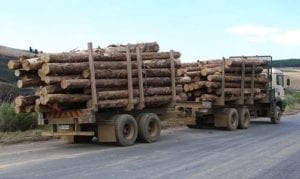Many transporters believe on-board weighing systems are a legal requirement. Tristan Wiggill weighs in on the issue.
Contrary to the above belief, the law says operators need only have a way to control their loads. Many of the associated problems could, therefore, be resolved by simply introducing certain procedures and disciplines. The fact is the state is almost powerless to stop vehicle overloading. While traffic officials stop a number of trucks at weighbridges during the day, many overloaded vehicles continue on their nefarious ways after dark. Many operators ignore the basics like tare weights. Some believe that all their trucks weigh exactly the same and/or that they weigh precisely what is said on the manufacturer’s documentation. It’s seldom what owners think because you’ve got to fill up with diesel and, by law, have a driver in the seat when weighing. Weighing each of your trucks is a worthwhile exercise, which could be done during the course of business with a proper weighbridge. Get them weighed by axle and make sure you know what it is. Everyone should understand the legal limits as there have been changes in tolerances over the years. Drivers and operating staff must know exactly what the values and tolerances are. Follow the paper trailIf you employ subcontractors, ask them if they know what the requirements are. Ideally, it should be stipulated in the contract you have with them. It is also important to leave a paper trail, because if the state decides to tackle you as a transporter, asking what you have done to address the law, and you don’t have a paper trail, then you won’t have a legal leg to stand on. Do the paperwork first, then the risk analysis, and find out just how much of a problem your company or contractor has before deciding how to approach the problem. Make sure you have control over it and insist that it’s documented.
You also need to quantify certain things within your company. If you’re being paid by the trip, it shouldn’t be an issue, provided you’re always under-loading. You need to have a procedure so that everyone loading the truck knows what they can and can’t do. It’s risky to load right to the limit, particularly with certain loads like bricks, whose weight increases markedly when wet.
Timber is also really difficult to accurately weigh as it’s virtually impossible to tell what the timber will weigh on any given day. You have different varieties of tree; it could be freshly cut or have been lying around for weeks, which could make a significant difference in weight. Sugar cane may be dense and heavy with sugar, or it could be dry and much lighter. Weighing it upA multi-deck weighbridge is the logical way to go if you have a large plant or mine. You can quickly print something for the driver and have full control over the truck as it leaves the mine or factory. By law, you have to have a printout in the truck of the weight that’s loaded. Also, historical data can be kept on a company server. Specialised software can be added to single, solid weighbridges, which are good enough to check axle distribution, provided the path to the weighbridge is completely flat. In the case of a single-axle system, you’ll need a truck-length area that is completely flat, both before and after the scale. Mobile weighing pads are useful only for experimentation and are not a genuine proposition. Industrial weighing systems are also available, but axle distribution can be an issue. When all else fails, you can carry a scale with you, mounted on the truck chassis.








